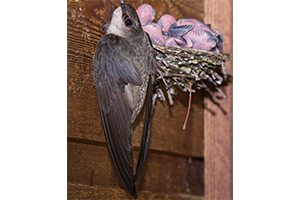Photo Credit: © greglasley via iNaturalist.org. Creative Commons Attribution-NonCommercial 4.0 International (CC BY-NC 4.0) License; https://creativecommons.org/licenses/by-nc/4.0/.
Chaetura pelagica
Common Name: chimney swift
Other Common Names: martinet ramoneur, Vencejo de chimenea
Animal Guild: Bird
Class > Order > Family: Aves > Apodiformes > Apodidae
